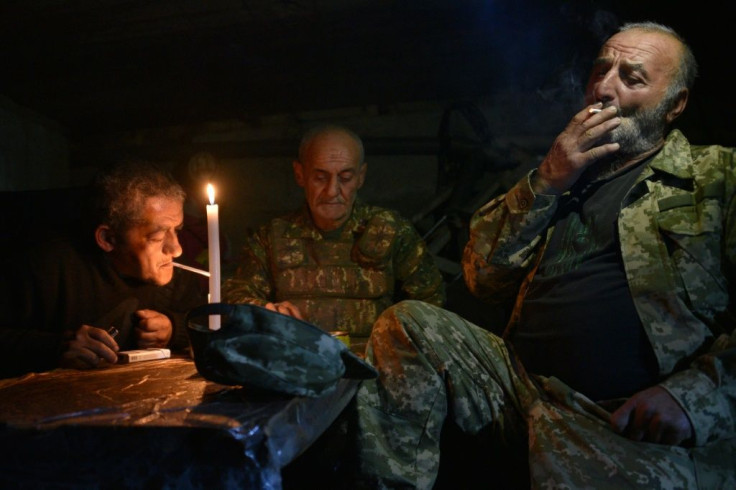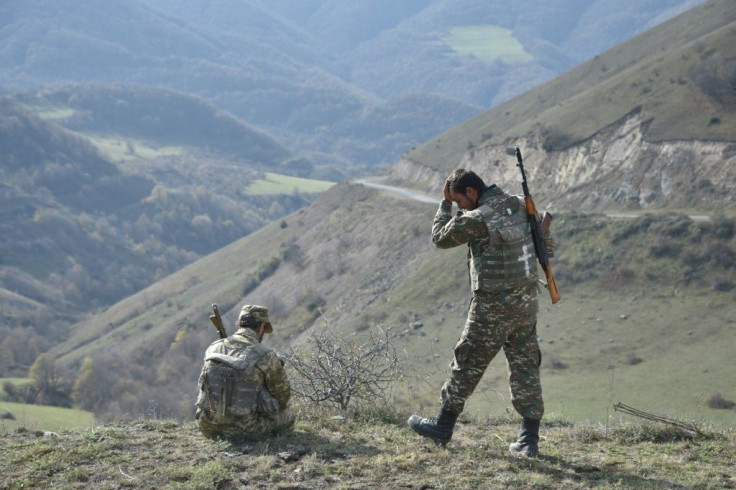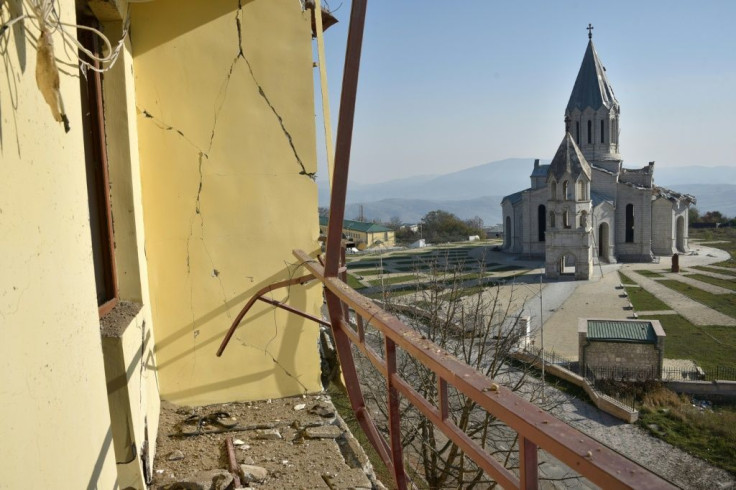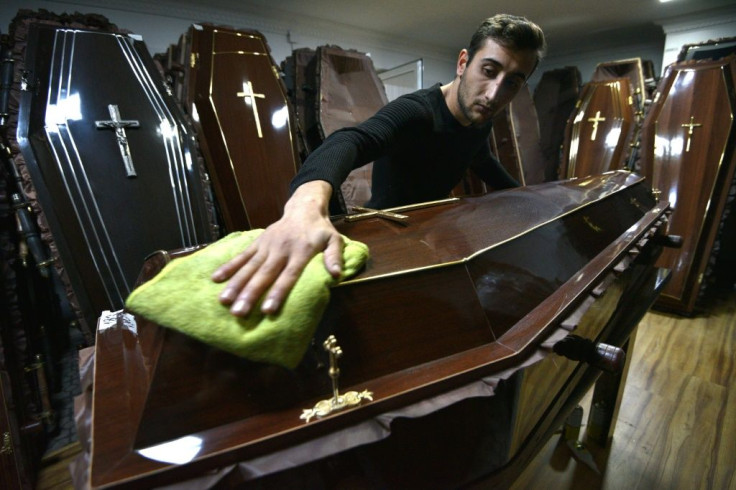Fighting Nears Key Town As Azerbaijani Forces Advance In Karabakh
Explosions sound in the distance as Kamo Hayrapetyan kneels to pray at the Holy Saviour Cathedral in Nagorno-Karabakh's historic town of Shusha.
Dressed in camouflage and white sneakers, the 60-year-old Armenian reservist lights candles and crosses himself under the partially collapsed roof of the church, which was hit by Azerbaijani rocket fire a month ago.
"They bomb us every day, it has become a habit for them," says Hayrapetyan, whose own home was destroyed in the artillery fire that has been pummelling Shusha.

"We will defend our land, we will hold out until the end. And we won't abandon Shushi," he says, using the Armenian name for the town.
An ethnic Armenian region of Azerbaijan, Nagorno-Karabakh broke away from Baku's control in a war in the early 1990s that left some 30,000 people dead.
Decades of stalemate, failed negotiations and sporadic clashes followed, until the heaviest fighting since a 1994 ceasefire erupted on September 27.

Nearly six weeks later, the clashes are getting closer every day to Shusha -- a sign of how far Azerbaijani forces have advanced in their campaign to retake the region.
Karabakh's separatist leader Arayik Harutyunyan sounded the alarm late last month, warning that Azerbaijani forces were only five kilometres (three miles) from Shusha.
"Whoever controls Shushi controls Artsakh," he said in a video filmed in front of the cathedral, using the Armenian names for the town and Nagorno-Karabakh.

The hilltop town, whose cliffs make it a natural fortress, is of huge strategic importance.

It sits on high ground over the region's capital Stepanakert and on the main road linking the city with the territory of neighbouring Armenia, which backs the separatists.
Officials in Karabakh and Armenia have reported numerous attacks to the south of Shusha in recent days.
There have been clashes in Karintak, known as Dashalty in Azerbaijan, a town at the base of the Shusha cliffs, and around the town of Lachin to the south.
Crucially, Azerbaijani forces have also reached the road that leads south from Stepanakert, through Shusha and Lachin, to the Armenian border.

This is the main road through the region and its capture would cut off the separatists' most important supply route.
It was closed for the first time on Wednesday, with Armenian defence ministry spokeswoman Shushan Stepanyan saying this was because of "search operations for possible subversive groups".
It is unclear how far -- and in what strength -- Azerbaijani forces have pushed in to the area around Shusha and the road, though Armenian officials have reported regular clashes and the destruction of armoured vehicles and tanks.
What is clear is that making it to the area at all represents a major gain for Azerbaijan since the start of fighting.
Azerbaijan has reclaimed swathes of territory on Karabakh's southern flank -- with experts estimating Baku has retaken 15 to 20 percent of the territory it lost in Nagorno-Karabakh and seven surrounding regions in the 1990s.
Much of this land is plains and the fighting will be much harder in the narrow passes and mountains where separatist forces have had years to build up their defences.
Armenian officials say any Azerbaijani gains have come at an enormous cost and claim to have killed several thousand enemy troops.
Separatist forces have admitted to more than 1,000 fighters killed, while Azerbaijan has not released any figures on its military casualties.
Both sides have meanwhile accused the other of regularly targeting residential areas with shelling and rocket fire, with more than 130 civilians confirmed dead on both sides.
In Shusha the signs of these attacks are everywhere, from bomb craters in gardens to apartment blocks with their windows blown out.
Most of Karabakh's civilians have fled the fighting to Armenia and Stepanakert on many days resembles a ghost town, with the sound of shelling and air raid sirens ringing through empty streets.
One of the few hubs of activity is a furniture workshop that has put its usual business on hold to make coffins, a sombre reminder of the growing number of dead.
The workshop is lined with a dozen newly-made caskets, their polished brown wood gleaming in the light.
"Unfortunately, we have to make coffins now because it is very important and in demand," says David Hayrapetyan, a 41-year-old who works in the factory, as a colleague secures a gold-coloured cross on top of a casket lid.
© Copyright AFP {{Year}}. All rights reserved.





















